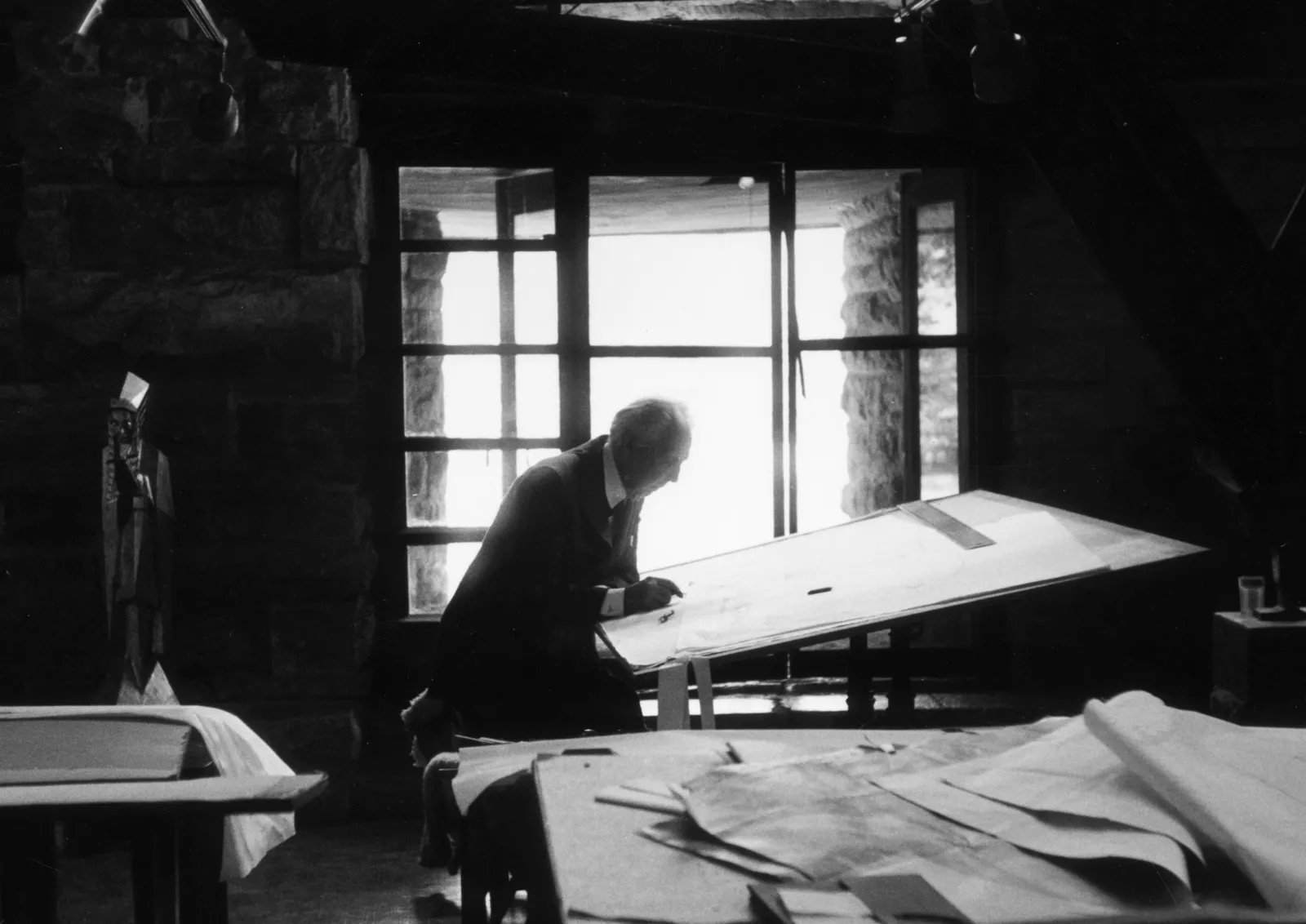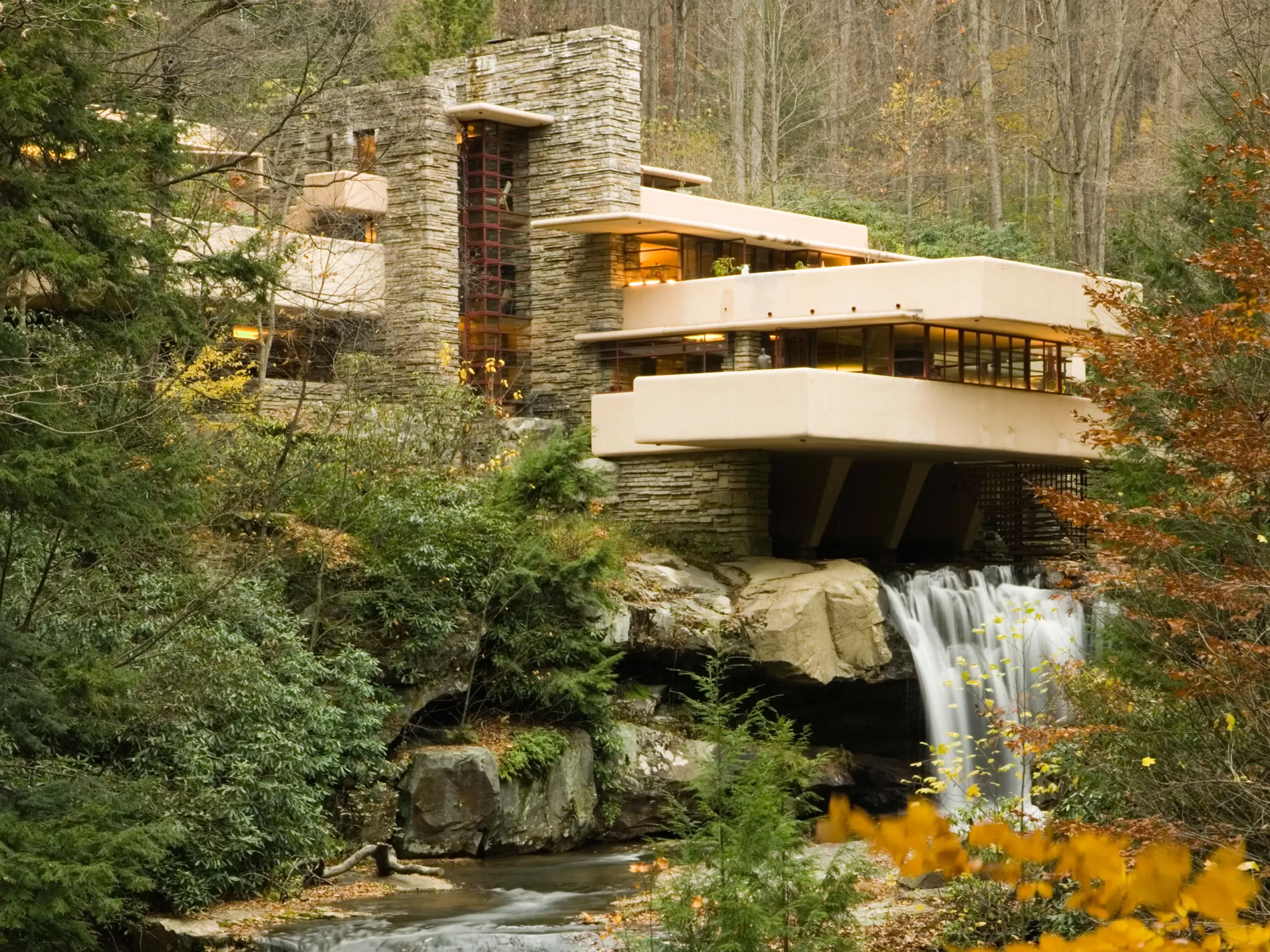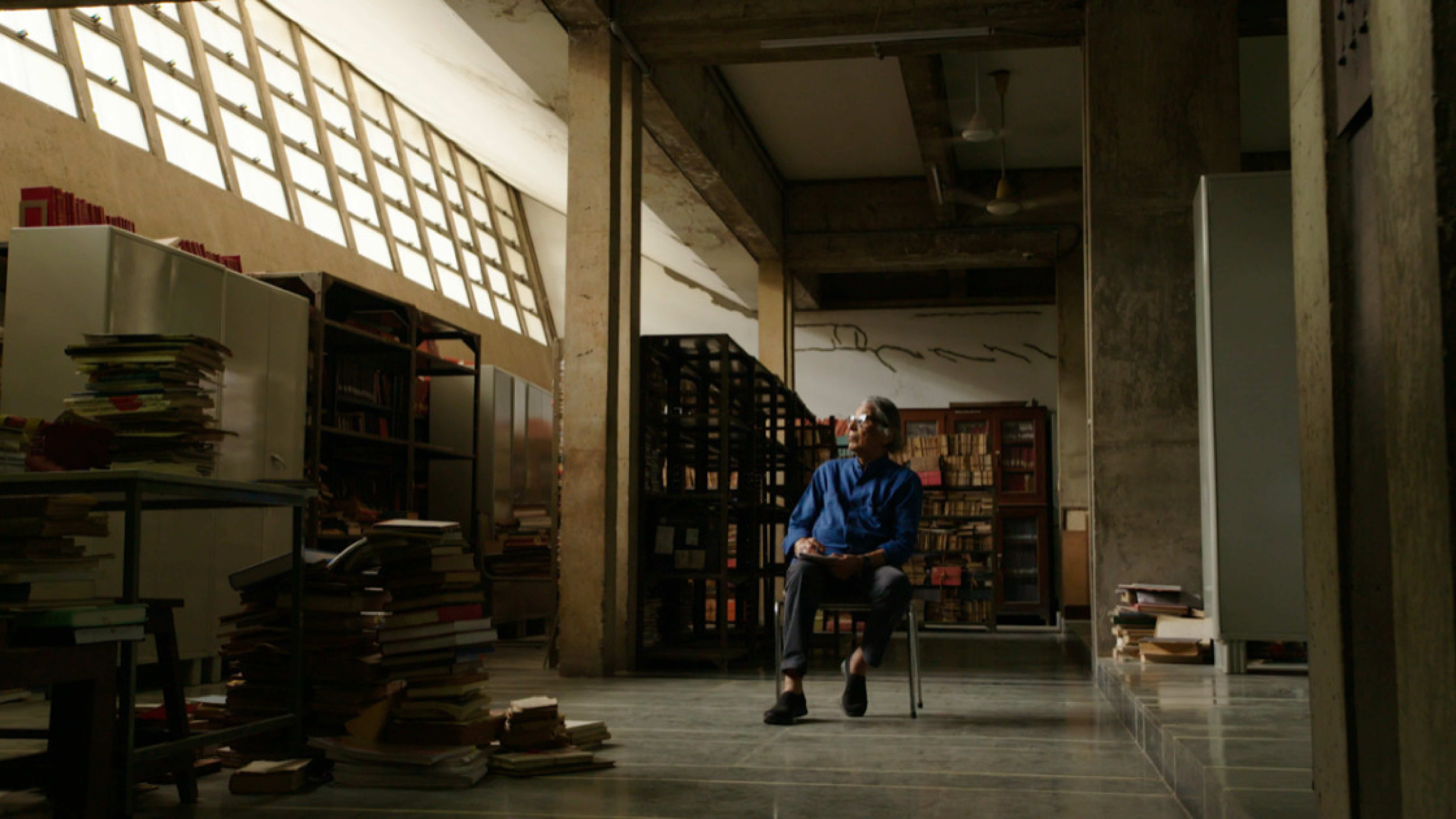Born into an English family in Wisconsin in 1867, Wright showed an early interest in architecture. After briefly studying civil engineering at the University of Wisconsin, he moved to Chicago where he found employment at the architectural firm of Joseph Lyman Silsbee. However, his encounter with Louis Sullivan, one of the leading architects of the time, was fundamental to his professional development and his vision of architecture.
Working as an apprentice under Sullivan deeply influenced Wright. He adopted Sullivan’s maxim of “form follows function,” meaning that a building’s design should be determined by its purpose and function, a principle that would later be reflected in his own work. After parting ways with Sullivan, Wright founded his own studio in 1893 and began to develop his distinctive style, moving away from the conventional architectural aesthetics of the time.
Wright developed what became known as the Prairie style, characterized by horizontal lines, open spaces, and a seamless integration between interior and exterior. His focus on the relationship between the natural environment and architecture, as well as his passion for geometry, was evident in numerous works where he sought to create a holistic architectural experience.
Throughout his career, Wright faced both personal and professional challenges. His personal life was marked by conflicts and tragedies, including the dissolution of his first marriage and the tragedy at Taliesin in 1914, where a disgruntled employee set fire to his residence, resulting in the deaths of several family members and collaborators.

Frank Lloyd Wright (1867-1959) at age 77. Courtesy of Getty Images
Despite these challenges, Wright continued to produce remarkable works, leaving a lasting legacy in architecture. His innovative approach, his ability to incorporate nature into his designs, and his emphasis on functionality and aesthetics led him to be recognized as one of the most influential architects in history. Throughout his life, he designed over a thousand structures, including houses, offices, churches, museums, and more, leaving an indelible mark on modern architecture.
Wright passed away in 1959, but his legacy persists through his enduring influence on modern architecture. His ideas about the relationship between architecture, nature, and functionality continue to inspire architects and designers worldwide. His work has been deeply studied and has left an indelible mark in the history of architecture as one of the most prominent and influential visionaries.

Frank Lloyd Wright working in the studio of his Taliesin West home in Arizona. Courtesy of Getty Images.
The impact of Wright on architecture is immeasurable. His innovative approach to design not only broke with traditional conventions but also set new standards in the profession. He is credited with creating the “Prairie style,” characterized by horizontal lines, open spaces, and a seamless integration with the surrounding environment. This style manifested in emblematic works such as the Robie House in Chicago and the Winslow House in River Forest, Illinois.
The Prairie style challenged architectural conventions of the time by focusing on horizontality, integration with the landscape, and the creation of organic spaces. This revolutionary style sought to merge architecture with nature, using horizontal lines that extended into the landscape, low roofs with broad overhangs, and a fluid distribution of interior and exterior spaces. The interconnection between structure and environment became a distinctive hallmark of the Prairie style, reflecting Wright’s philosophy that architecture should be a harmonious extension of life.
Wright not only made a mark on American architecture but also influenced architectural design worldwide. His focus on sustainability and connection with nature was ahead of his time. The organic nature of his designs, where structures merge with the topography and integrate with natural elements, demonstrates his concern for sustainability long before it became a popular concept.
Wright’s distinctive style is characterized by meticulous attention to detail, simplicity of forms, and integration of interior and exterior spaces. His designs pioneered the incorporation of sustainable elements. He used local materials and innovative construction techniques to maximize energy efficiency and minimize environmental impact. His love for nature is reflected in the use of natural light, incorporation of gardens, and integration of landscapes into his buildings.
Wright left an exceptional architectural legacy that includes iconic works across the United States and beyond. Fallingwater in Pennsylvania stands as a supreme example of his genius, with its design integrated with a natural waterfall. The Robie House in Chicago is another testament to his Prairie style, with its horizontal lines and symbiosis with the surroundings.

Frank Lloyd Wright’s Kaufmann House, also known as Fallingwater House, in Mill Run, Pennsylvania. Courtesy of Getty Images, Walter Bibikow

Frank Lloyd Wright’s Prairie House in Wisconsin. Courtesy of Metalocus, José Juan Barba
Additionally, the Guggenheim Museum in New York, one of his most famous works, challenges architectural conventions with its unique spiral form and focus on the visitor experience. Frank Lloyd Wright’s legacy extends beyond his death in 1959. His influence persists in generations of architects who continue to be inspired by his innovative approach and commitment to sustainability. His impact on modern architecture has led to posthumous awards and honors, cementing his position as one of the most influential architects of all time.
Frank Lloyd Wright not only left an exceptional architectural legacy but also changed the way we think about the relationship between architecture and nature. His visionary approach, distinctive style, and commitment to sustainability continue to inspire architects and designers in the quest for architecture that harmonizes with its surroundings. His impact endures, and his legacy remains an endless source of inspiration and learning in the world of modern architecture.







Leave A Comment